Abstract
Six pigeons responded on a series of concurrent exponential variable-interval schedules, offering a within-subject comparison with previously published data from concurrent arithmetic variable-interval schedules. Both relative and overall reinforcer rates were varied between conditions. The generalized matching law described the data well, with undermatching much more frequent than strict matching. Time-allocation sensitivity consistently exceeded response-allocation sensitivity for both schedule types, and exponential-schedule sensitivity exceeded arithmetic-schedule sensitivity for both measures of choice. A further set of conditions using variable-interval schedules whose shortest interval was correlated with the mean interval, like arithmetic schedules, but that provided a constant conditional probability of reinforcement, like exponential schedules, produced sensitivities between those produced by conventional arithmetic and exponential schedules. Unlike previous arithmetic-schedule results, exponential sensitivity changed nonmonotonically with changes in overall reinforcer rate. The results clarify our knowledge of the effects of arithmetic and exponential schedules but confuse our understanding of the effects of overall reinforcer rate on concurrent choice.
Keywords: concurrent choice, generalized matching, shortest interval, sensitivity to reinforcer rate, arithmetic and exponential schedules, key peck, pigeon
Full text
PDF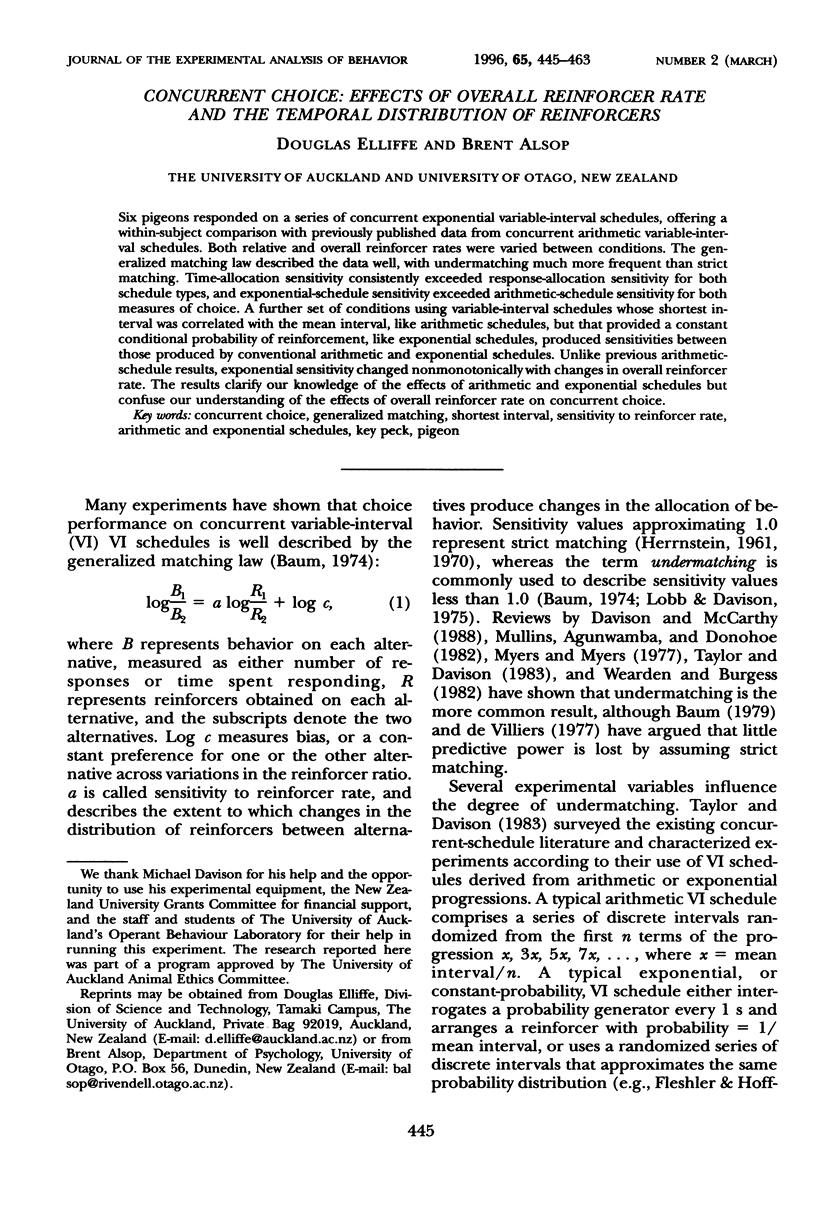
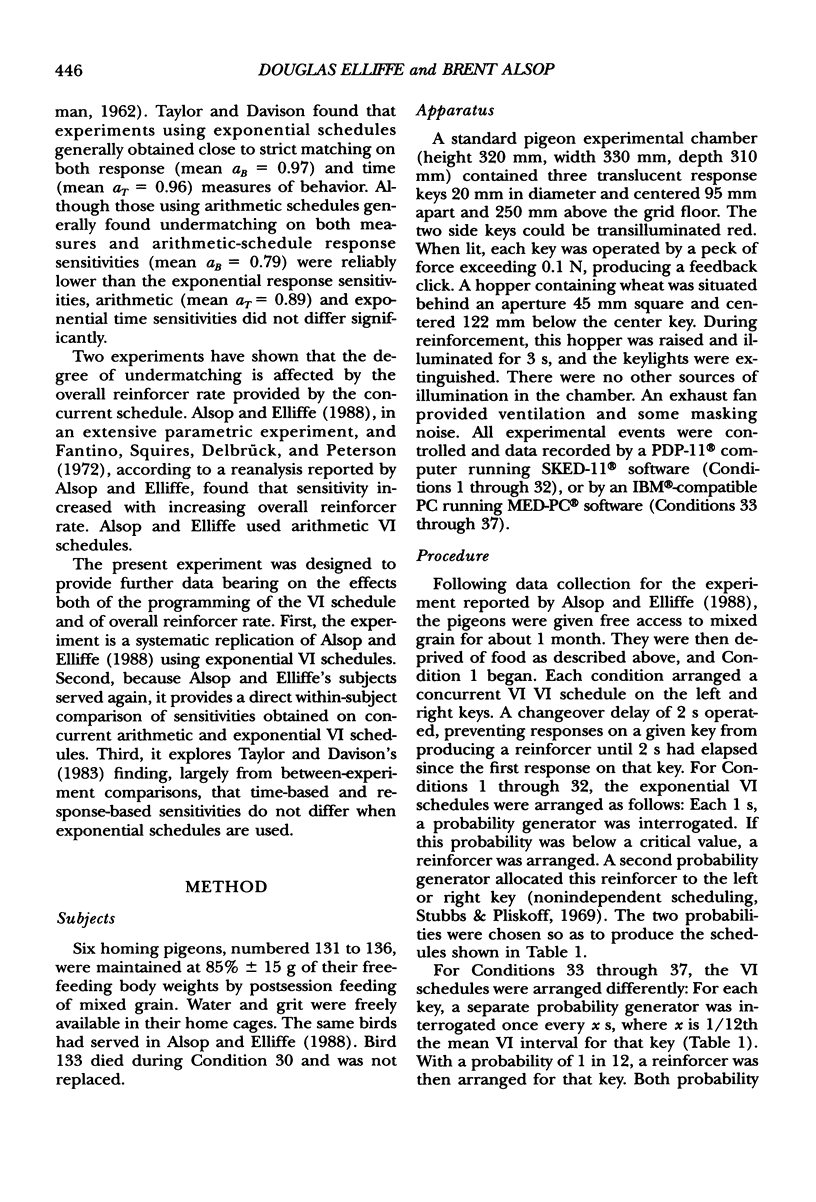
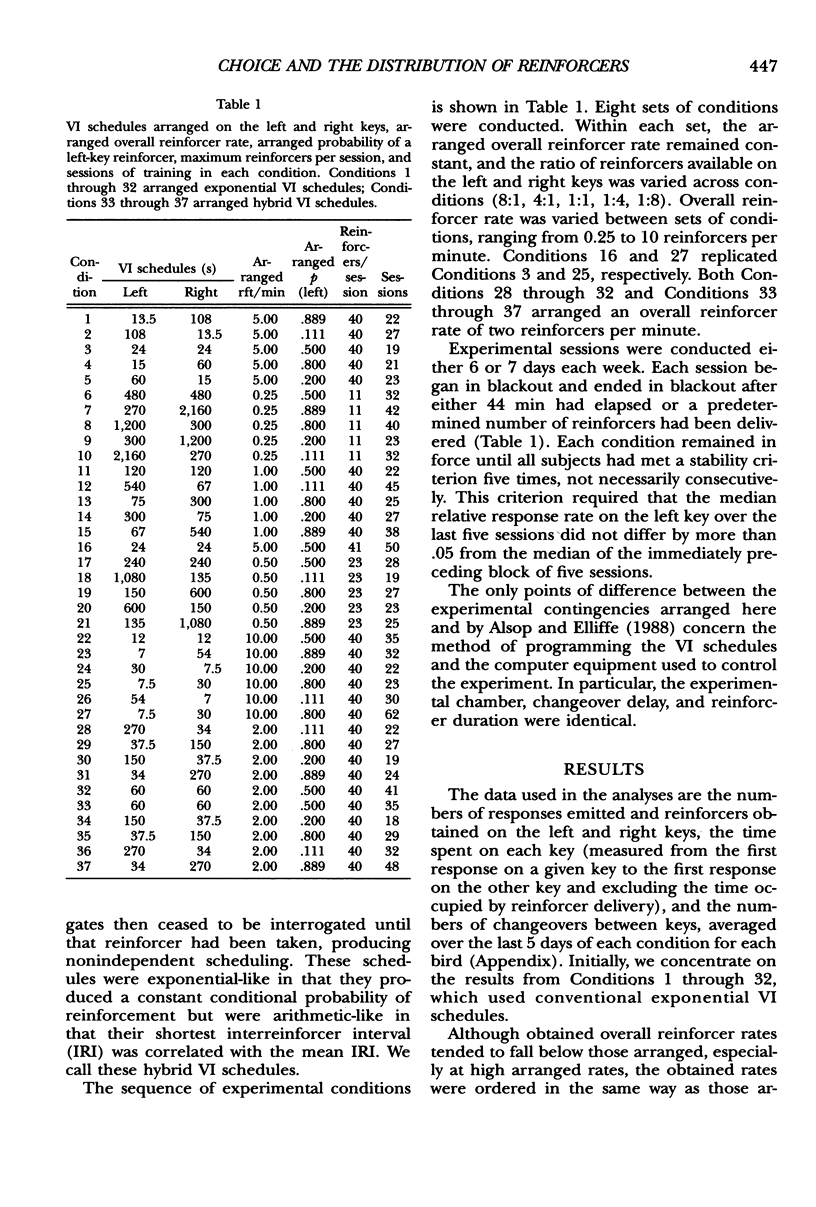
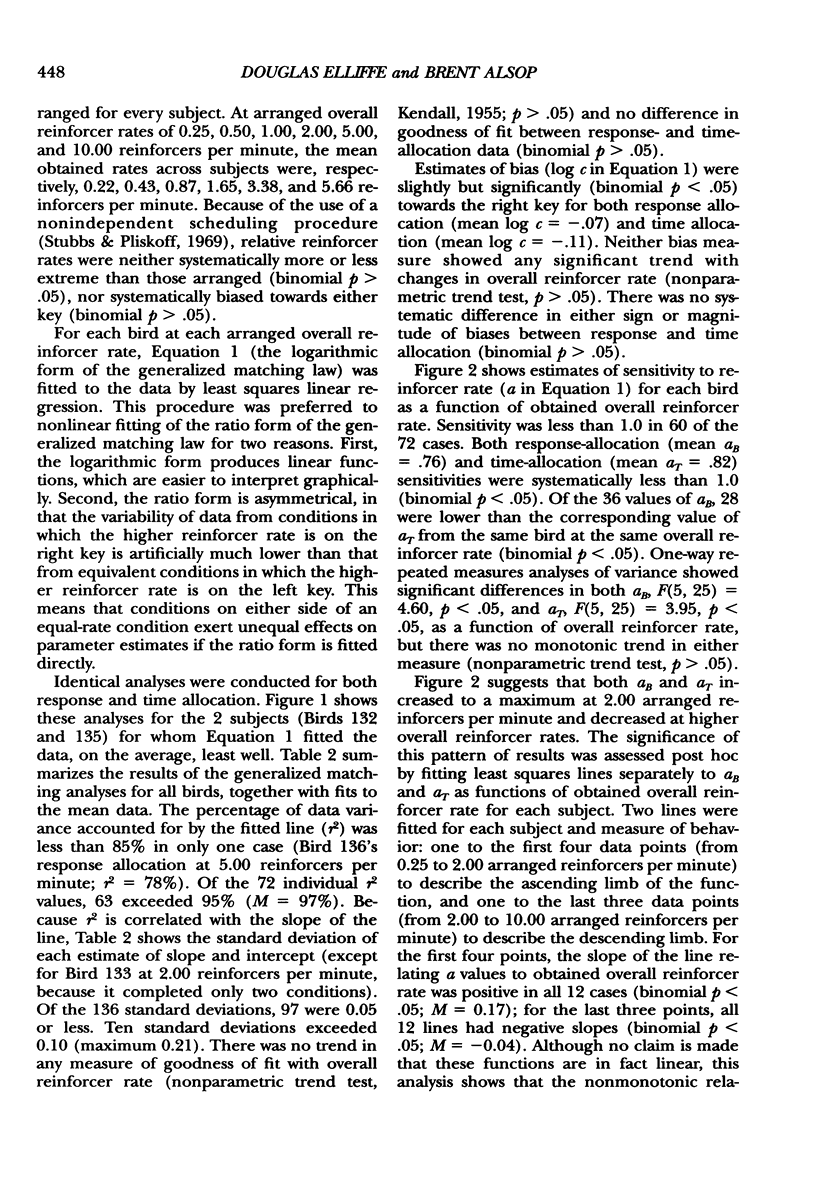
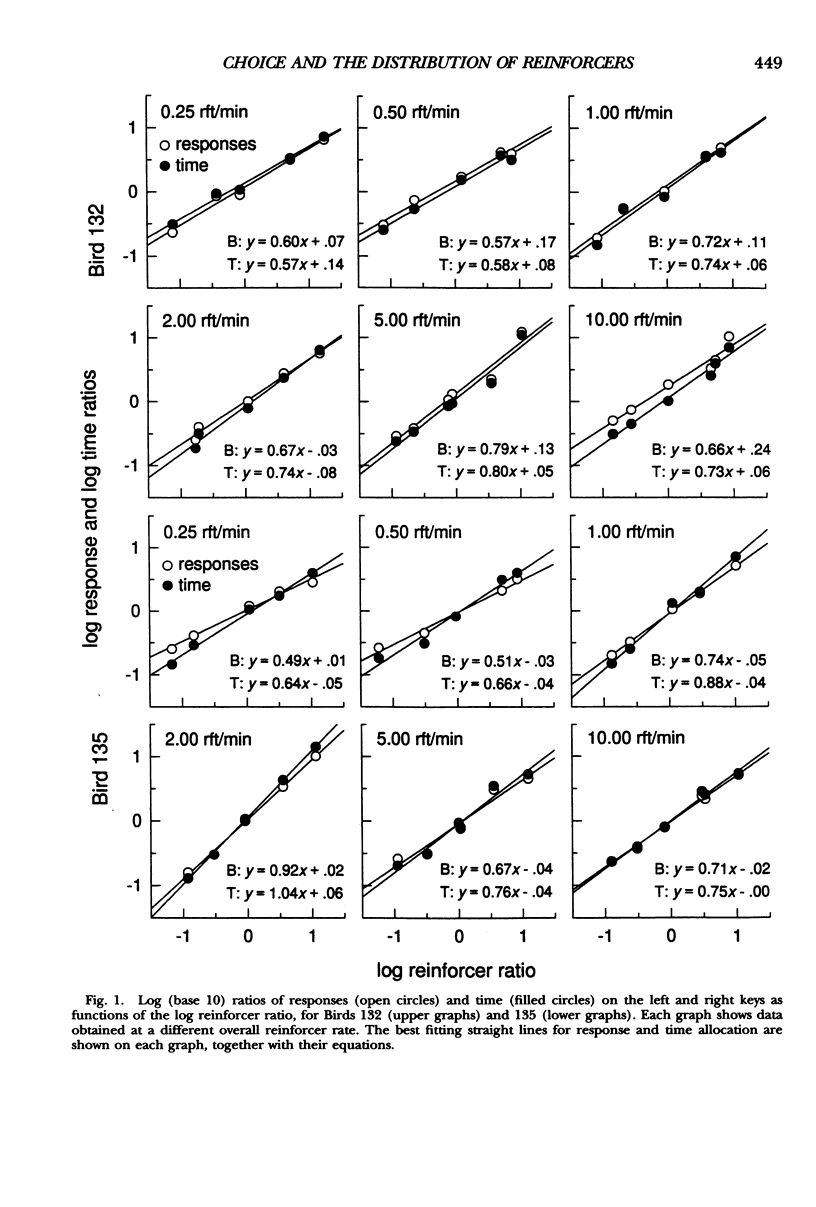
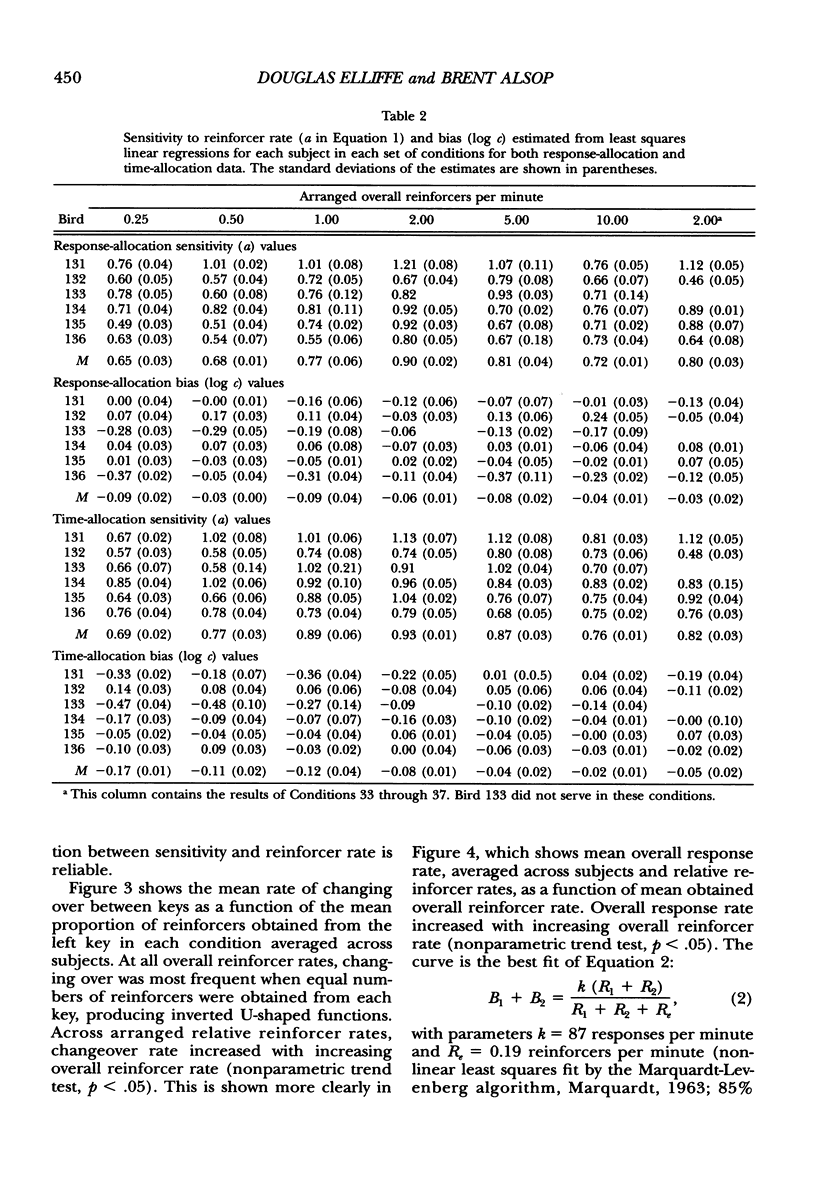
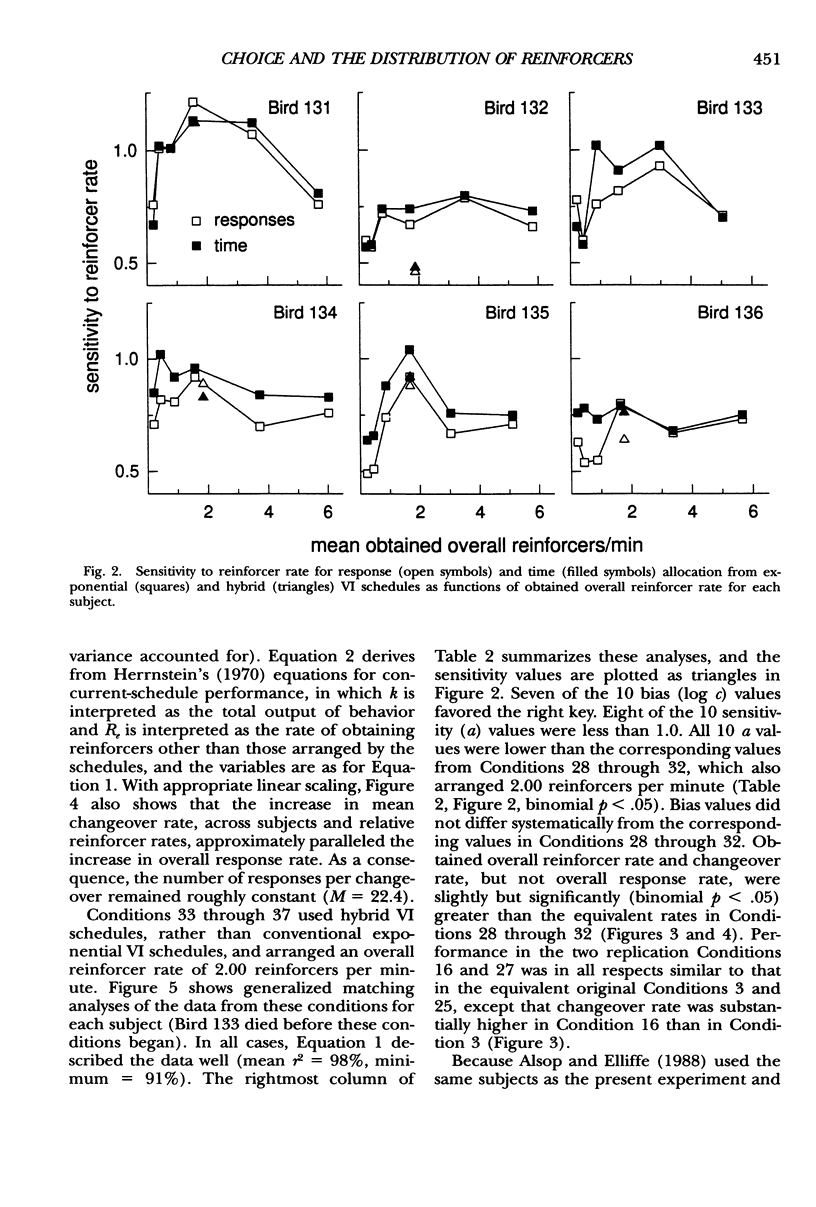
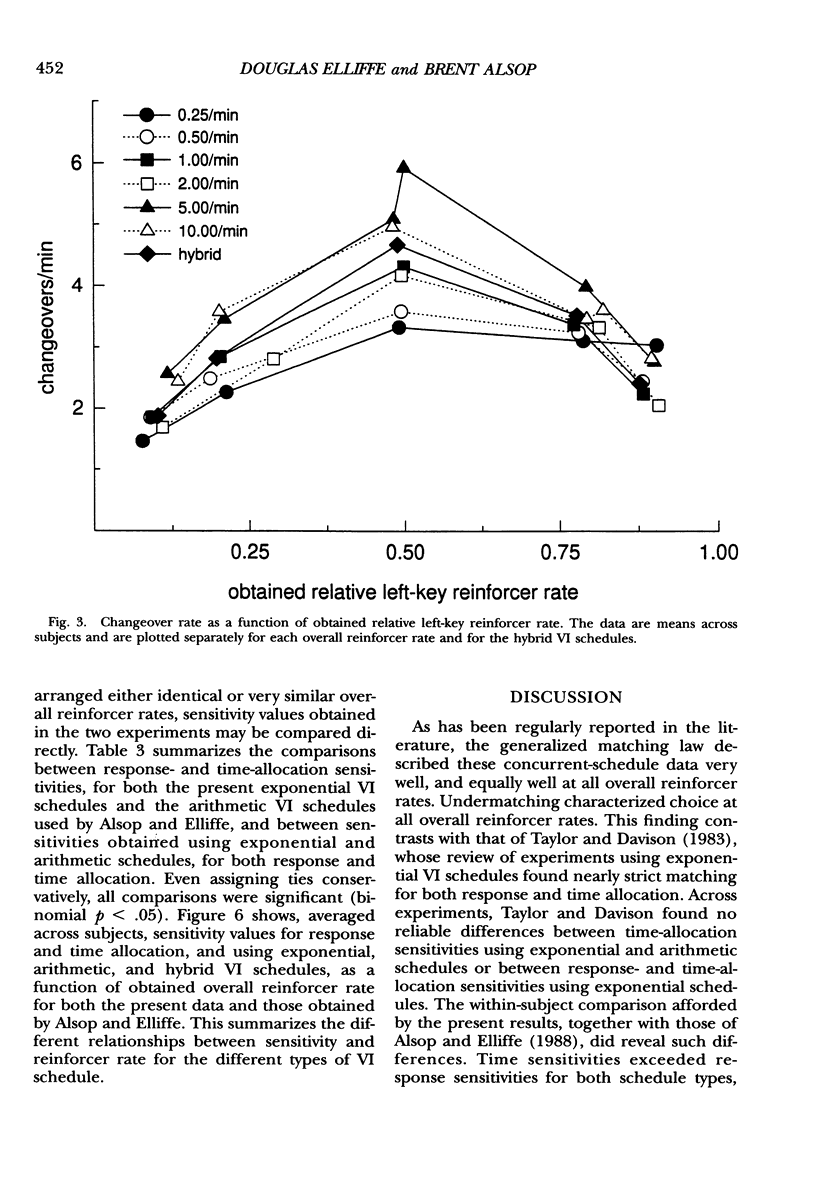
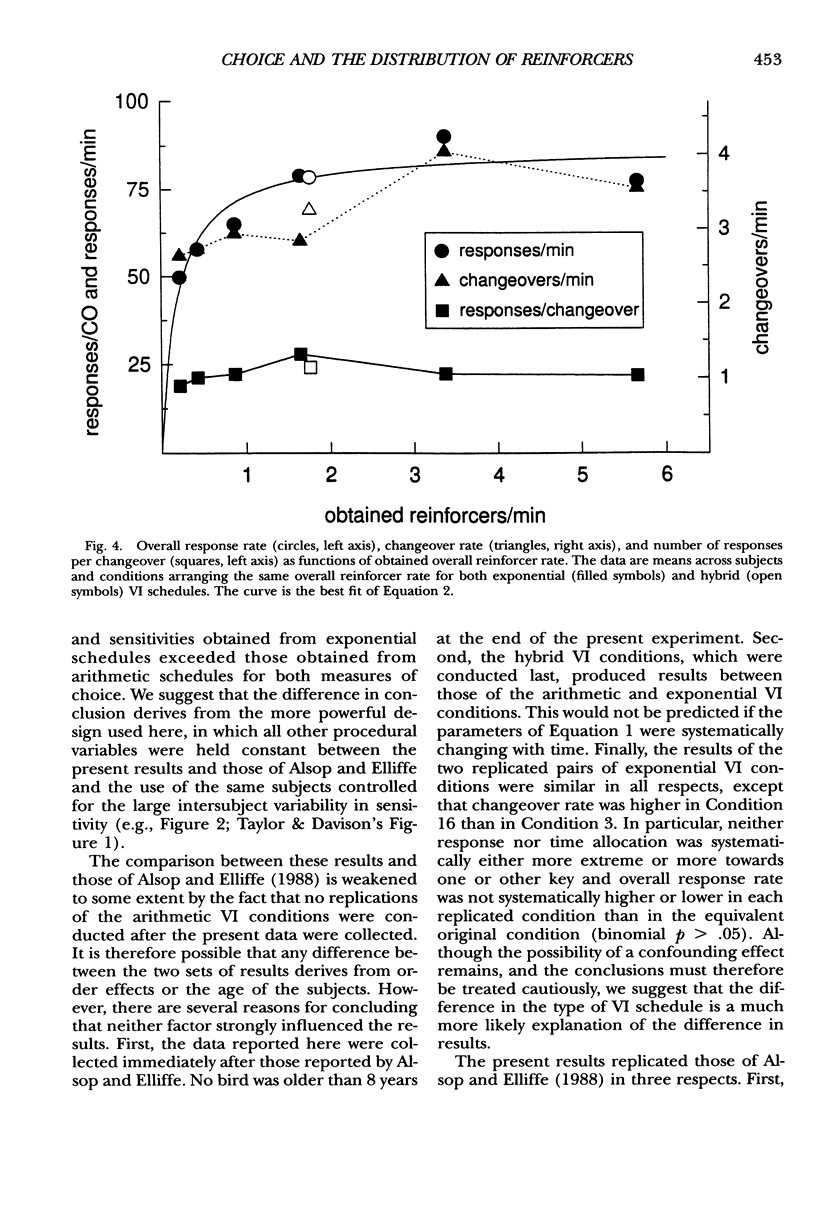
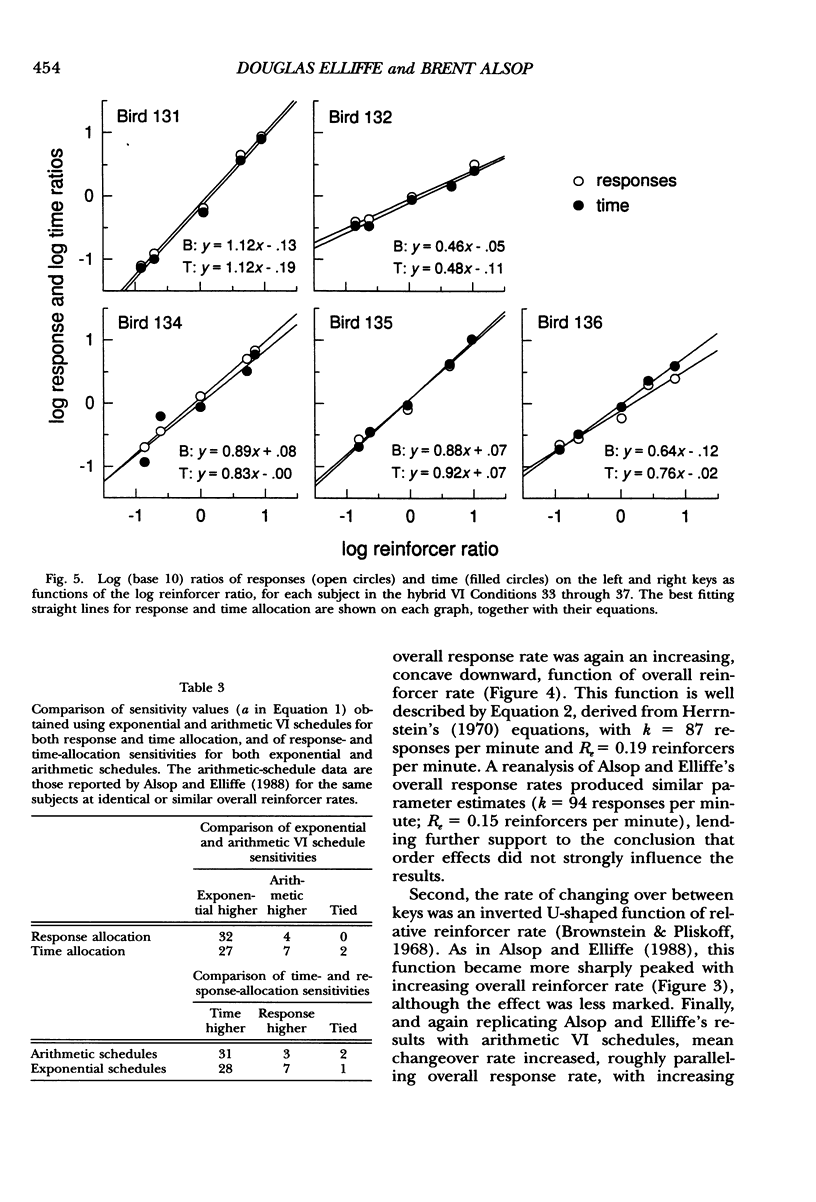
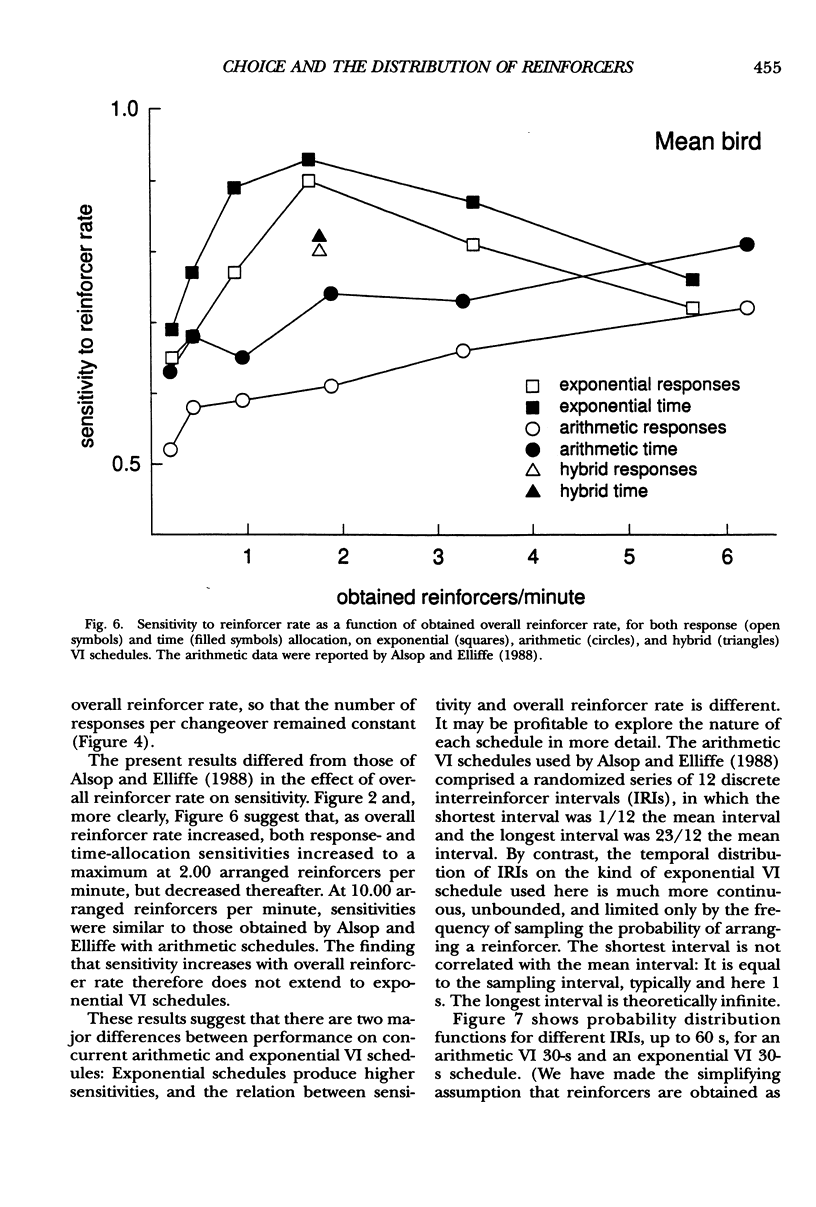
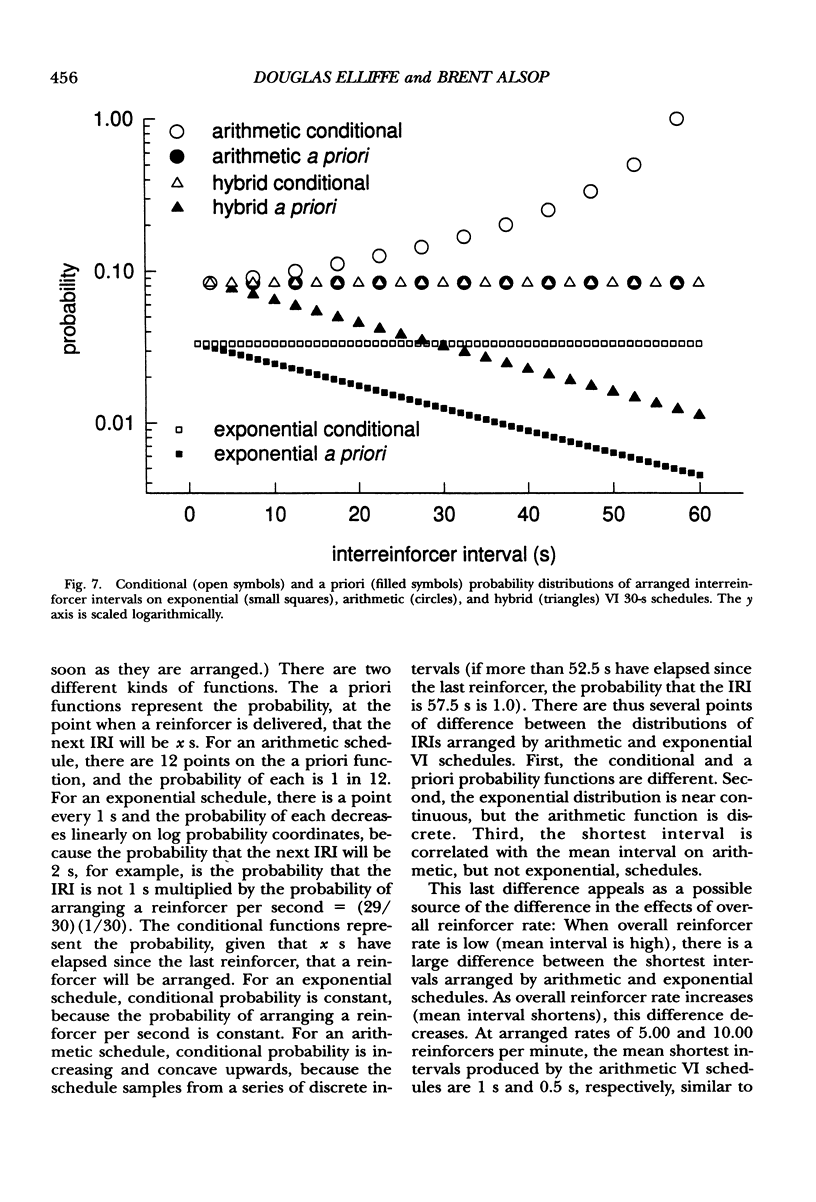
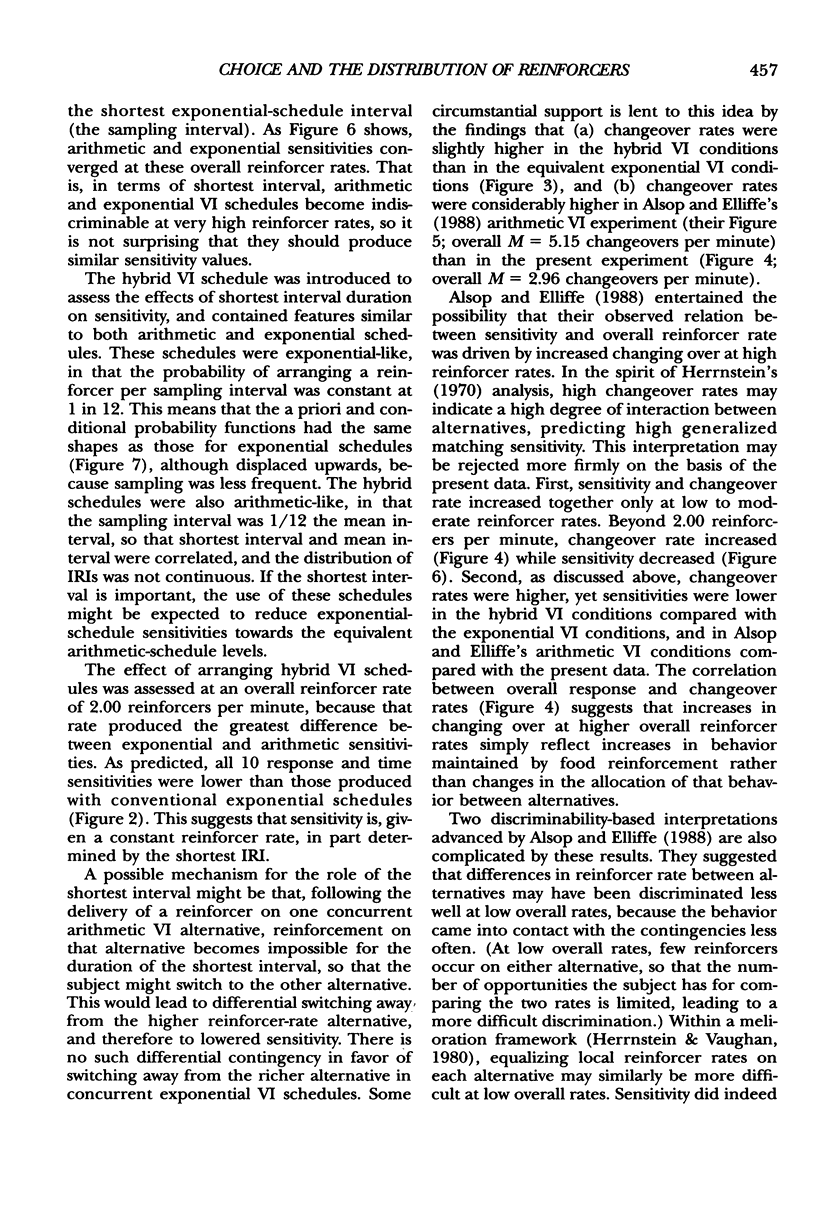
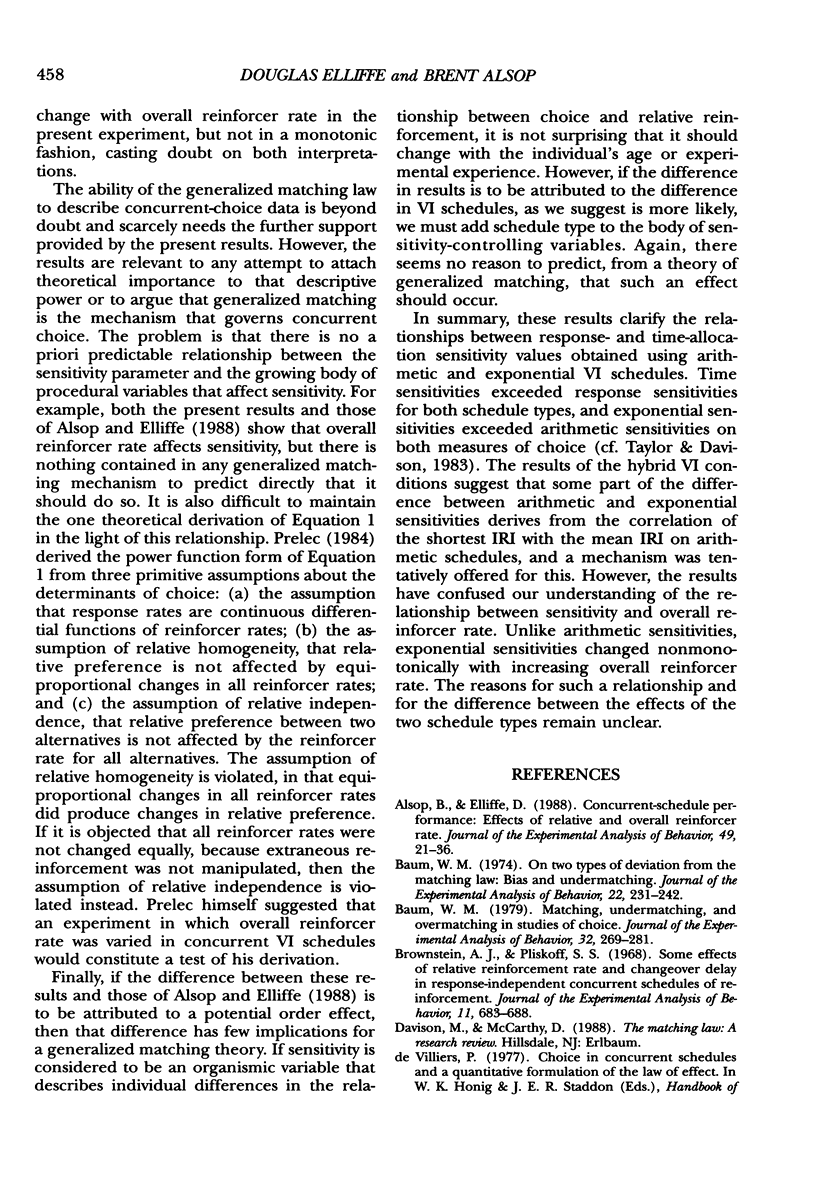
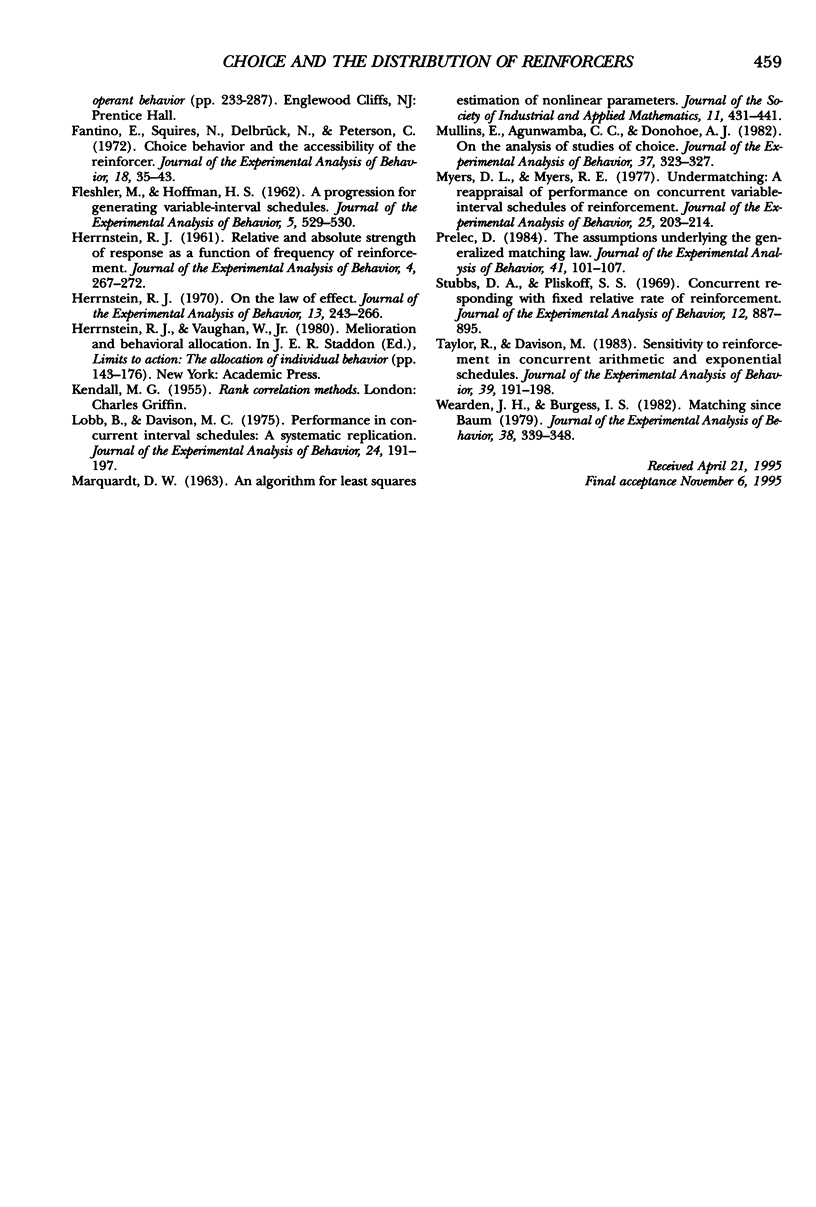
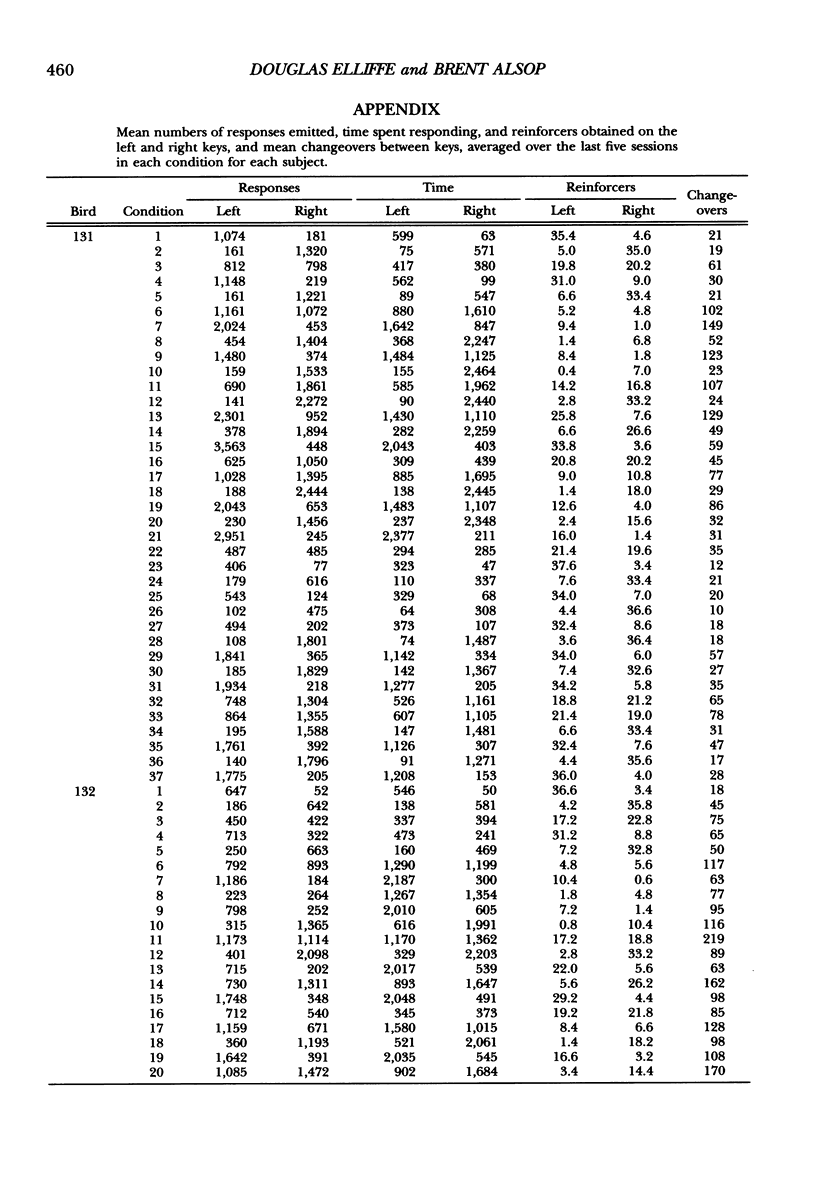
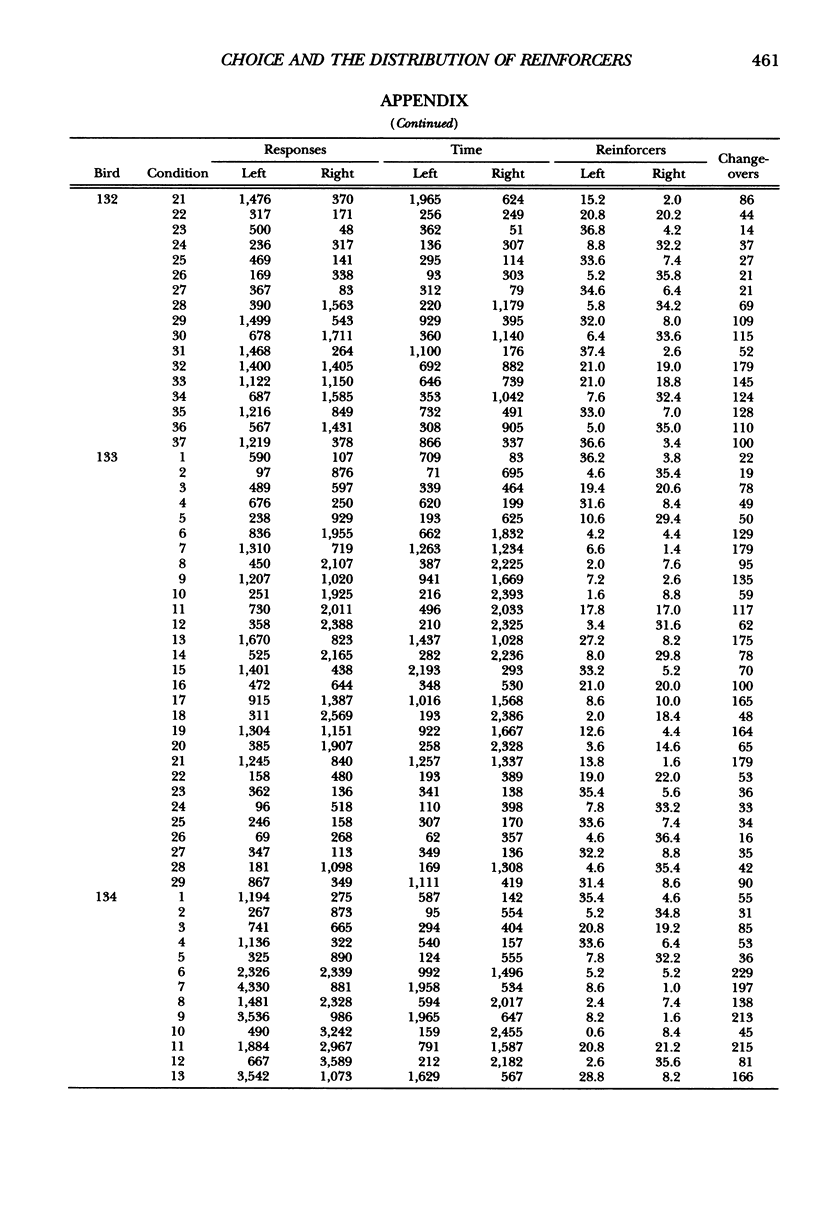
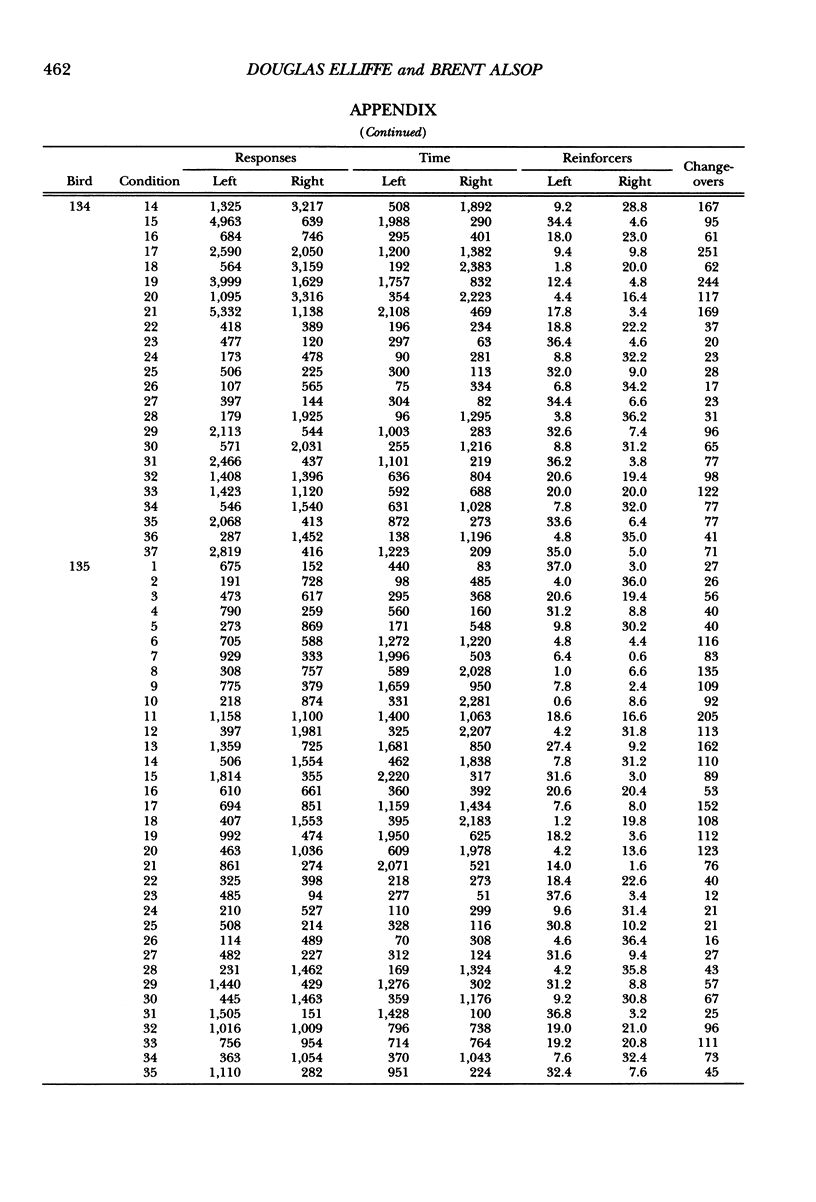
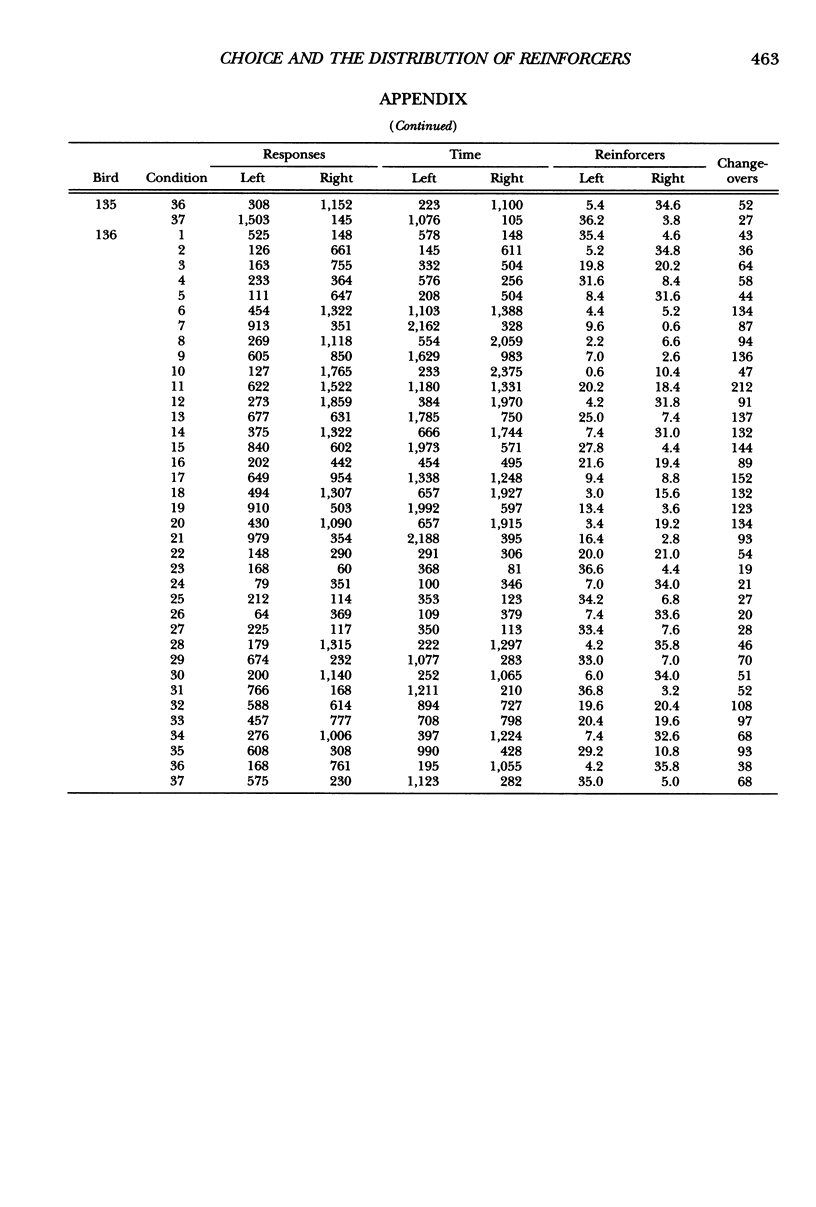
Selected References
These references are in PubMed. This may not be the complete list of references from this article.
- Alsop B., Elliffe D. Concurrent-schedule performance: Effects of relative and overall reinforcer rate. J Exp Anal Behav. 1988 Jan;49(1):21–36. doi: 10.1901/jeab.1988.49-21. [DOI] [PMC free article] [PubMed] [Google Scholar]
- Baum W. M. Matching, undermatching, and overmatching in studies of choice. J Exp Anal Behav. 1979 Sep;32(2):269–281. doi: 10.1901/jeab.1979.32-269. [DOI] [PMC free article] [PubMed] [Google Scholar]
- Baum W. M. On two types of deviation from the matching law: bias and undermatching. J Exp Anal Behav. 1974 Jul;22(1):231–242. doi: 10.1901/jeab.1974.22-231. [DOI] [PMC free article] [PubMed] [Google Scholar]
- Brownstein A. J., Pliskoff S. S. Some effects of relative reinforcement rate and changeover delay in response-independent concurrent schedules of reinforcement. J Exp Anal Behav. 1968 Nov;11(6):683–688. doi: 10.1901/jeab.1968.11-683. [DOI] [PMC free article] [PubMed] [Google Scholar]
- FLESHLER M., HOFFMAN H. S. A progression for generating variable-interval schedules. J Exp Anal Behav. 1962 Oct;5:529–530. doi: 10.1901/jeab.1962.5-529. [DOI] [PMC free article] [PubMed] [Google Scholar]
- Fantino E., Squires N., Delbrück N., Peterson C. Choice behavior and the accessibility of the reinforcer. J Exp Anal Behav. 1972 Jul;18(1):35–43. doi: 10.1901/jeab.1972.18-35. [DOI] [PMC free article] [PubMed] [Google Scholar]
- HERRNSTEIN R. J. Relative and absolute strength of response as a function of frequency of reinforcement. J Exp Anal Behav. 1961 Jul;4:267–272. doi: 10.1901/jeab.1961.4-267. [DOI] [PMC free article] [PubMed] [Google Scholar]
- Herrnstein R. J. On the law of effect. J Exp Anal Behav. 1970 Mar;13(2):243–266. doi: 10.1901/jeab.1970.13-243. [DOI] [PMC free article] [PubMed] [Google Scholar]
- Lobb B., Davison M. C. Performance in concurrent interval schedules: a systematic replication. J Exp Anal Behav. 1975 Sep;24(2):191–197. doi: 10.1901/jeab.1975.24-191. [DOI] [PMC free article] [PubMed] [Google Scholar]
- Mullins E., Agunwamba C. C., Donohoe A. J. On the analysis of studies of choice. J Exp Anal Behav. 1982 Mar;37(2):323–327. doi: 10.1901/jeab.1982.37-323. [DOI] [PMC free article] [PubMed] [Google Scholar]
- Myers D. L., Myers L. E. Undermatching: a reappraisal of performance on concurrent variable-interval schedules of reinforcement. J Exp Anal Behav. 1977 Jan;27(1):203–214. doi: 10.1901/jeab.1977.27-203. [DOI] [PMC free article] [PubMed] [Google Scholar]
- Prelec D. The assumptions underlying the generalized matching law. J Exp Anal Behav. 1984 Jan;41(1):101–107. doi: 10.1901/jeab.1984.41-101. [DOI] [PMC free article] [PubMed] [Google Scholar]
- Stubbs D. A., Pliskoff S. S. Concurrent responding with fixed relative rate of reinforcement. J Exp Anal Behav. 1969 Nov;12(6):887–895. doi: 10.1901/jeab.1969.12-887. [DOI] [PMC free article] [PubMed] [Google Scholar]
- Taylor R., Davison M. Sensitivity to reinforcement in concurrent arithmetic and exponential schedules. J Exp Anal Behav. 1983 Jan;39(1):191–198. doi: 10.1901/jeab.1983.39-191. [DOI] [PMC free article] [PubMed] [Google Scholar]
- Wearden J. H., Burgess I. S. Matching since Baum (1979). J Exp Anal Behav. 1982 Nov;38(3):339–348. doi: 10.1901/jeab.1982.38-339. [DOI] [PMC free article] [PubMed] [Google Scholar]


